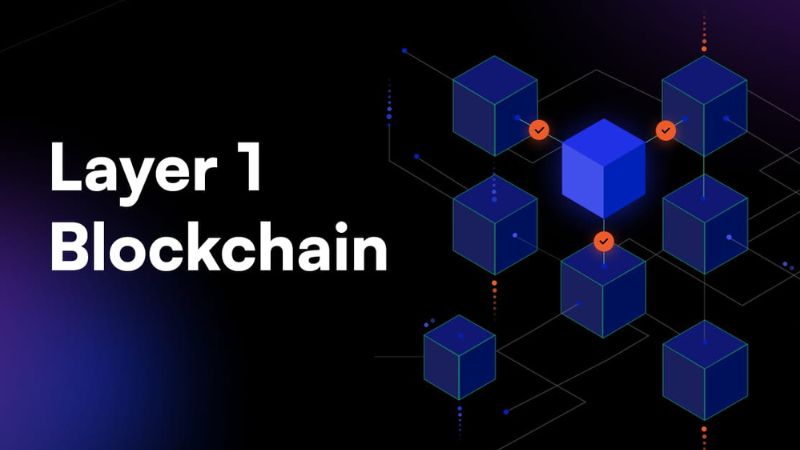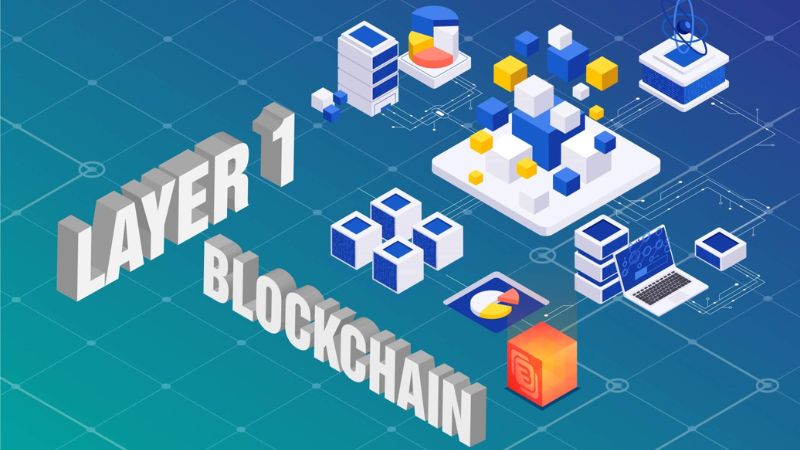Blockchain Layer 1 — the base layer that supports the entire structure. Layer 1 blockchains, often referred to as the main chains, are critical because they define the core protocols, rules, and infrastructure on which other layers and applications are built.
Layer 1’s importance becomes evident when considering the challenges of scalability, security, and decentralization, commonly referred to as the blockchain trilemma. A well-designed Layer 1 strikes a balance among these three aspects, enabling the blockchain to function efficiently and reliably.
As blockchain technology evolves, understanding the role and significance of Layer 1 is essential for grasping the broader implications of the technology in areas like finance, governance, and digital innovation. This section explores why Layer 1 is a decisive factor in shaping the success of a blockchain ecosystem.
Core Criteria of Layer 1 blockchain
Layer 1 blockchains are judged by their ability to meet key performance criteria, which directly impact their functionality and adoption. These criteria include:
Security
Security is paramount for any blockchain. Layer 1 ensures the integrity and safety of data and transactions through mechanisms such as cryptographic encryption and consensus algorithms.
- Consensus Mechanisms: Proof of Work (PoW) and Proof of Stake (PoS) are the most common approaches. PoW, used by Bitcoin, offers high security but at the cost of energy efficiency. PoS, adopted by Ethereum 2.0, enhances efficiency while maintaining robust security standards.
- Immutability: Layer 1 safeguards against unauthorized changes, ensuring that transaction records remain permanent and tamper-proof.
Decentralization
Decentralization guarantees that no single entity controls the network, maintaining fairness and trust.
- Node Distribution: A greater number of nodes across diverse geographies strengthens decentralization.
- Network Participation: Layer 1 encourages widespread participation by lowering entry barriers for validators and miners.
Scalability
Scalability is crucial for supporting a growing number of users and transactions. However, achieving scalability while maintaining security and decentralization is a significant challenge.
- Transaction Throughput: Layer 1’s ability to process a high number of transactions per second (TPS) is vital. For instance, Solana claims a TPS far exceeding older blockchains like Bitcoin.
- Scaling Solutions: Innovative approaches like sharding (used in Ethereum 2.0) and directed acyclic graphs (DAGs) are emerging to enhance scalability at the Layer 1 level.
By addressing these core criteria, Layer 1 sets the stage for higher layers (e.g., Layer 2) and applications, providing a stable foundation for innovation and real-world use cases.
Applications and Impact of layer 1 blockchain
Layer 1 blockchains play a pivotal role in shaping the blockchain ecosystem, as they serve as the backbone for decentralized applications (dApps), financial services, and emerging technologies. Their influence is evident across multiple domains:
Leading Layer 1 Blockchains and Their Ecosystems
- Bitcoin: As the first blockchain, Bitcoin established the principles of decentralization and security, primarily as a peer-to-peer digital currency. Its robust architecture has inspired countless innovations in the blockchain space.
- Ethereum: Often regarded as the most versatile Layer 1, Ethereum introduced smart contracts, enabling the rise of dApps, decentralized finance (DeFi), and NFTs. Its transition to Ethereum 2.0 and Proof of Stake is a testament to the importance of adaptability in Layer 1 systems.
- Other Examples: Blockchains like Binance Smart Chain (BSC), Solana, and Avalanche have emerged with unique propositions, such as lower fees, faster transactions, or modular architectures.
Enabling Decentralized Finance (DeFi)
Layer 1 serves as the bedrock for DeFi, which has revolutionized the financial landscape by removing intermediaries and providing open financial services.
- Lending, borrowing, and trading protocols like Aave, Uniswap, and Curve rely on the reliability and efficiency of Layer 1 infrastructure.
- Scalability and security at Layer 1 directly impact the growth and adoption of DeFi platforms.
Empowering NFTs and Gaming
The explosion of NFTs and blockchain-based gaming highlights the importance of Layer 1 in supporting new digital economies.
- NFTs demand high transaction speeds and low costs, which are often limited by Layer 1 scalability.
- GameFi projects leverage Layer 1 to ensure transparency, ownership, and interoperability across virtual assets.
Bridging Layers and Ecosystems
Layer 1 also connects with Layer 2 and cross-chain protocols to expand blockchain capabilities:
- Layer 2 Scaling Solutions: Technologies like rollups and state channels rely on Layer 1 for final settlement and security.
- Interoperability Protocols: Layer 1 must support cross-chain compatibility to enable seamless communication between different blockchains, ensuring a unified ecosystem.
Through its applications and impact, Layer 1 demonstrates how foundational innovations can drive the adoption and evolution of blockchain technology across diverse industries.
The Future of blockchain Layer 1
As blockchain technology continues to mature, the future of Layer 1 blockchains will be shaped by advancements in scalability, innovation, and community involvement. Below are the key trends and factors that will influence the evolution of Layer 1.
Competition and Innovation
- New Consensus Mechanisms: Beyond Proof of Work (PoW) and Proof of Stake (PoS), emerging mechanisms such as Proof of History (PoH) and Proof of Space (PoSpace) aim to address the limitations of current systems.
- Modular Blockchains: A growing trend involves separating components like execution, consensus, and data availability, allowing for more efficient and scalable Layer 1 designs (e.g., Celestia).
- Customizability: Layer 1 platforms are increasingly providing tools for developers to build custom blockchains tailored to specific use cases, as seen with Polkadot and Cosmos.
Balancing the Blockchain Trilemma
Layer 1 solutions will continue striving to solve the blockchain trilemma of security, decentralization, and scalability:
- Sharding and Parallel Processing: Ethereum’s adoption of sharding is a significant step toward improving scalability without sacrificing decentralization.
- Decentralized Validator Networks: Expanding the number and geographical distribution of validators ensures security and fairness while enhancing decentralization.
The Role of Communities and Ecosystem Development
- Community Governance: Decentralized Autonomous Organizations (DAOs) are increasingly managing Layer 1 protocols, ensuring that changes are community-driven.
- Developer Ecosystems: Layer 1 success depends on vibrant developer communities, which create the dApps and tools that drive adoption. Investment in developer-friendly environments will be crucial.
- Education and Adoption: Broader education about blockchain technology will help onboard more users and foster trust in Layer 1 platforms.
Integration with Real-World Applications
The next phase of Layer 1 development will focus on bridging the gap between blockchain and traditional industries:
- Enterprise Use Cases: Businesses are exploring Layer 1 solutions for supply chain management, digital identity, and tokenization of assets.
- Regulatory Compliance: As governments develop blockchain regulations, Layer 1 platforms will need to adapt to meet compliance requirements while maintaining decentralization.
Multi-Chain Future
- Interoperability: A future where multiple Layer 1 blockchains coexist and communicate seamlessly will enhance the overall efficiency of the blockchain ecosystem. Cross-chain protocols and bridges will play a critical role in realizing this vision.
- Layer 1 Collaboration: Instead of competing, Layer 1 blockchains may increasingly work together, creating synergies to solve common challenges and expand the global blockchain network.
Layer 1 blockchains are the cornerstone of the blockchain ecosystem, providing the infrastructure for security, scalability, and innovation. As the technology evolves, the ability of Layer 1 platforms to address emerging challenges and adapt to new demands will define their relevance and impact.
With advancements in scalability, modular designs, and interoperability, Layer 1 has the potential to shape a future where blockchain is seamlessly integrated into everyday life, driving decentralization and innovation on a global scale.




